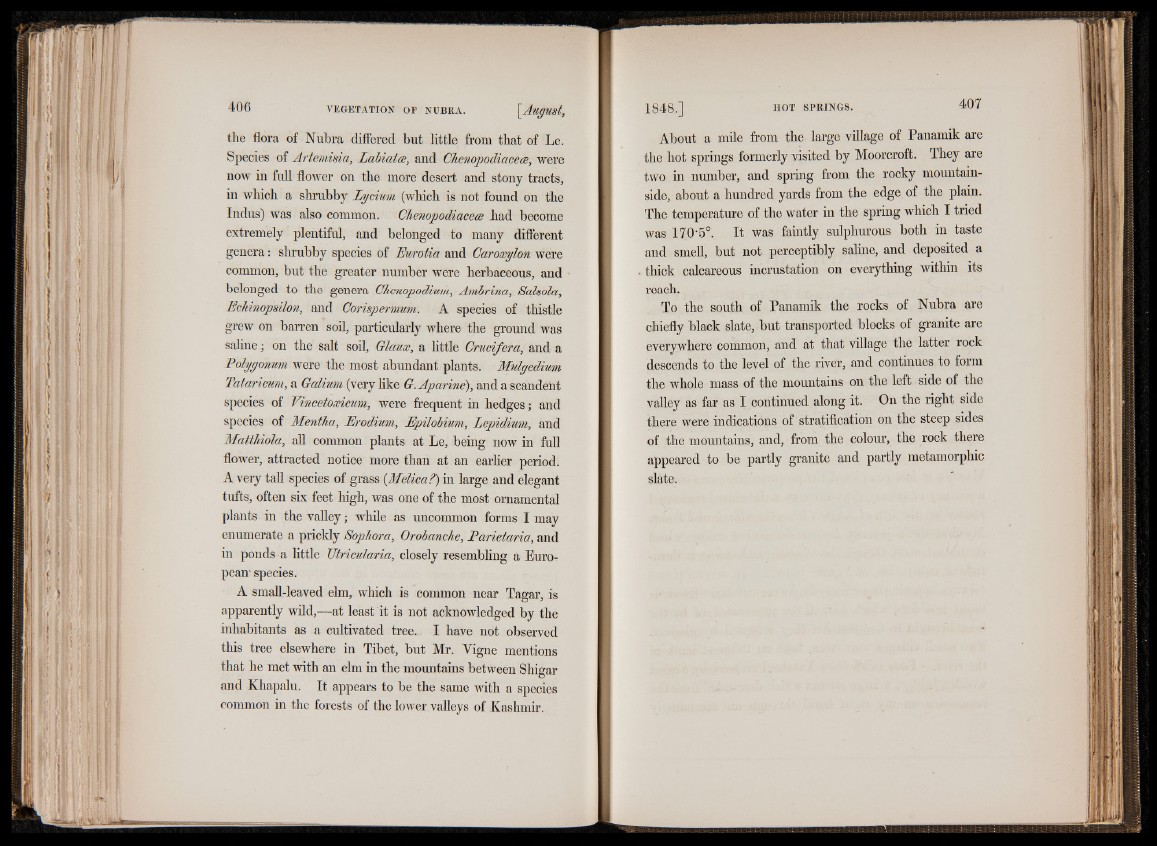
the flora of Nubra differed but little from that of Le.
Species of Artemisia, Labiatce, and Chenopodiacece, were
now in frill flower on the more desert and stony tracts,
in which a shrubby Lycmm (which is not found on the
Indus) was also common. Chenopodiacece had become
extremely plentiful, and belonged to many different
genera: shrubby species of Eurotia and Caroxylon were
common, but the greater number were herbaceous, and
belonged to the genera Chenopodium, Ambrina, Salsola,
Echmopsilon, and Corispermum. A species of thistle
grew on barren soil, particularly where the ground was
saline; on the salt soil, Glaux, a little Crucifer a, and a
Polygonum were the most abundant plants. Mulgedium
Tataricum, a Galium (very like G.Aparine), and a scandent
species of Vincetoxicum, were frequent in hedges; and
species of Mentha, Erodium, Epilobium, Lepidium, and
Matthiola, all common plants at Le, being now in full
flower, attracted notice more than at an earlier period.
A very tall species of grass (Melica ?) in large and elegant
tufts, often six feet high, was one of the most ornamental
plants in the valley; while as uncommon forms I may
enumerate a prickly Sophora, Orobanche, Parietaria, and
in ponds a little TJtricularia, closely resembling a European'
species.
A small-leaved elm, which is common near Tagar, is
apparently wild,—at least it is not acknowledged by the
inhabitants as a cultivated tree. I have not observed
this tree elsewhere in Tibet, but Mr. Yigne mentions
that he met with an elm in the mountains between Shigar
and Khapalu. It appears to be the same with a species
common in the forests of the lower valleys of Kashmir.
About a mile from the large village of Panamik are
the hot springs formerly visited by Moorcroft. They are
two in number, and spring from the rocky mountainside,
about a hundred yards from the edge of the plain.
The temperature of the water in the spring which I tried
was 170-5°. It was faintly sulphurous both in taste
and smell, but not perceptibly saline, and deposited a
thick calcareous incrustation on everything within its
reach.
To the south of Panamik the rocks of Nubra are
chiefly black slate, but transported blocks of granite are
everywhere common, and at that village the latter rock
descends to the level of the river, and continues to form
the whole mass of the mountains on the left side of the
valley as far as I continued along it. On the right side
there were indications of stratification on the steep sides
of the mountains, and, from the colour, the rock there
appeared to be partly granite and partly metamorphic
slate.